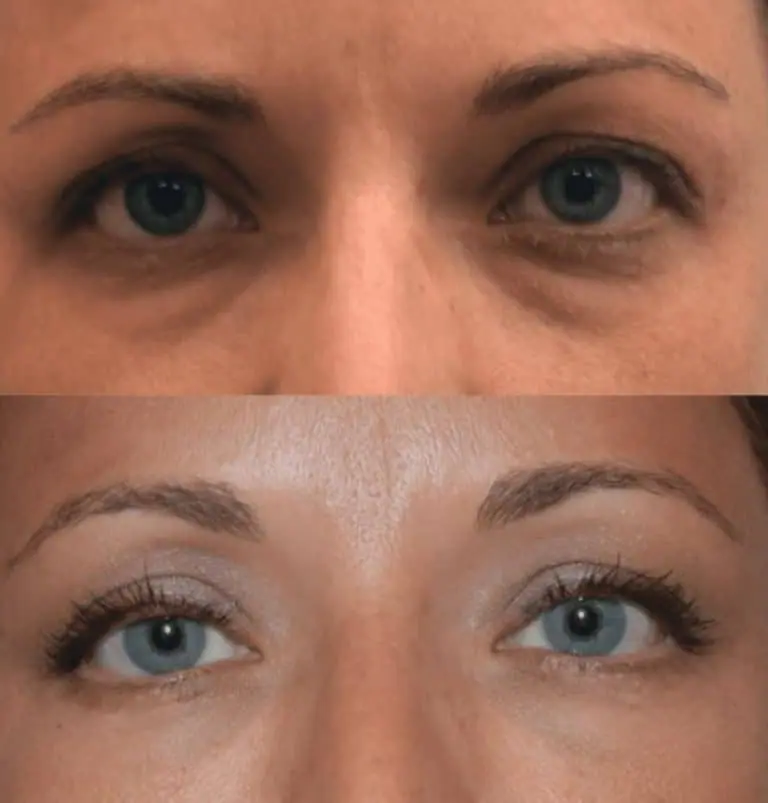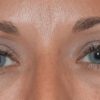Tired of your droopy eyelids making you look older or more tired than you are?
Eyelid surgery is a proven method to turn back the hands of time and achieve a refreshed youthful appearance.
As one of the top eyelid surgeons in New York, Dr. Darren M. Smith understands the transformative power of blepharoplasty. With his expertise, you can bid farewell to sagging skin and say hello to your most vibrant self.
What is Eyelid Surgery?
Eyelid surgery, also known as blepharoplasty, is a surgical procedure that can address both functional and cosmetic concerns of the eyelids. There are different types of blepharoplasty procedures depending on the specific goals:
| Procedure | Description |
| Upper blepharoplasty | Removes excess skin, muscle, and fat from the upper eyelids to lift droopy eyelids. |
| Lower blepharoplasty | Reduces bags under the eyes by eliminating extra skin and fat from the lower eyelids. |
| Four-lid eyelid surgery | Performs both upper and lower blepharoplasty in one procedure. |
| Asian eyelid surgery | Also called double eyelid surgery, creates an eyelid crease for patients without a natural fold. |
| Transconjunctival blepharoplasty | Accesses lower eyelid fat through an inner eyelid incision. |
Benefits of Eyelid Surgery
Eyelid surgery provides both functional and aesthetic improvements.
- It addresses impaired vision from excess skin weighing down the eyelids. By removing extra tissue, blepharoplasty lifts the eyelids to enhance one’s field of vision.
- Eyelid surgery achieves facial rejuvenation and a refreshed look. As skin loses elasticity with age, eyelids can take on a loose, tired appearance. Blepharoplasty contours the eyelid border for a more youthful, wide-eyed effect.
- Eyelid surgery also remedies specific concerns like dark circles and puffiness. By eliminating bags and excess skin and fat, the eyelids appear refreshed with reduced tissue redundancy. The result is a more alert, refreshed appearance around the eyes. For both vision and appearance, blepharoplasty offers transformative benefits.
Candidates for Eyelid Surgery
While everyone ages differently and at different rates, most patients undergoing eyelid surgery in our practice are between their mid-thirties and mid-sixties. Interest in the procedure typically develops as skin laxity develops in the upper lids and fat herniation becomes apparent in the lower lids.
All patients must be assessed for eye disease like dry-eye or glaucoma and systemic issues like diabetes, thyroid disorders, high blood pressure, or cardiovascular disease, as these can impact healing and safety.
Patients should discuss their full medical history with Dr. Smith. In some cases, we will consult with your ophthalmologist or primary care doctor as appropriate to ensure your safety during the procedure.
Realistic expectations are also important. While blepharoplasty relieves tired eyes and boosts confidence through a more youthful appearance, it cannot always completely erase dark circles or eliminate all signs of aging. We will discuss your desired goals and expectations during your consultation..
The best candidates for eyelid surgery will have some combination of skin excess, fat herniation and muscle laxity. These anatomical issues can be very effectively addressed with blepharoplasty. At the initial consultation, Dr. Smith will review the anatomical basis for your aesthetic concerns and discuss the best plan for your individual needs.
Eyelid Surgery: The Process
1. Initial Consultation
During the initial meeting, Dr. Smith examines the eyelids, reviews the medical history, and discusses goals to see if surgery is an appropriate option.
2. Surgical Planning
A tailored plan is devised based on each patient’s unique presentation and what they wish to achieve.
3. Selection of Technique
Technique selection depends on individual factors like skin quality and level of laxity. Options may include external, transconjunctival, or specialized modified procedures.
4. Anesthesia and Safety
When your procedure day arrives,, local anesthesia, sedation, or general anesthesia will be administered. Dr. Smith adheres to the highest standards of safety and works with a small team of hand-picked board-certified anesthesiologists.
5. Incision Placement
Incisions are carefully designed to camouflage in natural skin creases or in some cases may be completely invisible..
6. Removal of Tissue
Excess skin, muscle, and fat are removed to create the desired contour and lift of the upper and lower eyelids.
7. Closure of Incisions
Incisions are meticulously closed using fine sutures to minimize scarring. Transconjunctival incisions do not require closure.
Recovery from Eyelid Surgery
Throughout your postoperative period, Dr. Smith will counsel you on how to keep your eyes lubricated with specialized drops and how to employ other techniques to ensure an easy recovery.
Additional Procedures and Techniques
Beyond basic blepharoplasty, certain supplementary procedures can further enhance eyelid rejuvenation:
| Procedure | Description |
| Brow Lift | A procedure to lift drooping brows, which can contribute to a tired look. It restores the position of the brows, resulting in a more youthful appearance. |
| Endoscopic Brow Lift | Similar to a traditional brow lift, but it uses tiny incisions and an endoscope to minimize scarring. This technique allows for a more targeted and less invasive approach to lifting the brows. |
| Laser Resurfacing | Specialized laser devices are used to address fine wrinkles, discoloration, and dark circles in the eyelid area. The treatment helps to smooth and brighten the skin, improving the overall appearance. |
| Fat Grafting | Involves using a patient’s own fat to restore volume to depleted structural fat pads or to fill in wrinkles. This procedure helps achieve a more natural-looking volume restoration. |
| Dermal Fillers | Injectable fillers like Restylane are used to sculpt fine contours in the eyelid area. They can be used to add volume, smooth out wrinkles, and enhance the overall appearance of the eyelids. |
Taking the Next Step Toward Refreshed Eyes
Contact us today to discuss your aesthetic goals and medical suitability for eyelid surgery. Dr. Smith’s comprehensive evaluation will assess your eyelids, medical history, and lifestyle to develop a personalized surgical strategy for achieving the look you desire.
By understanding your unique concerns and desired outcomes, he will expertly guide you on the path to refreshed eyes.
You deserve to glow with the self-assurance that comes from looking your very best. Take the first step by calling (212) 633-0627 or booking a consultation online.
Eyelid Surgery Before & Afters





